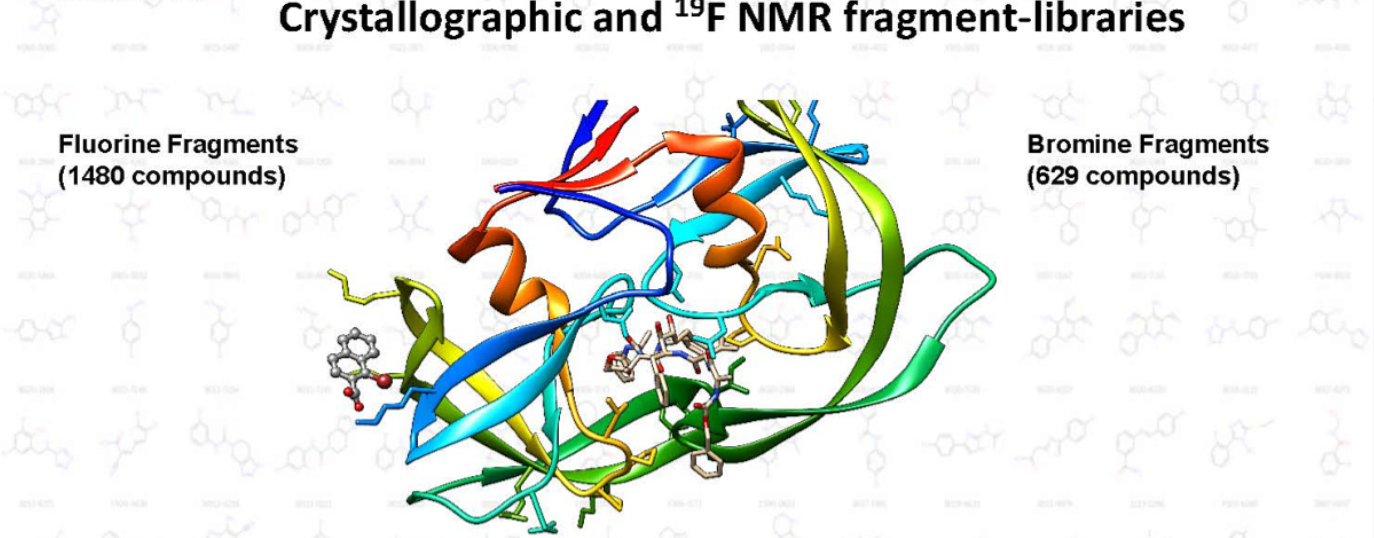Crystallographic and 19F NMR fragment libraries have emerged as powerful tools in fragment-based drug discovery, enabling the rapid and efficient identification of small molecule fragment hits for target proteins. These libraries leverage the strengths of both X-ray crystallography and 19F nuclear magnetic resonance (NMR) spectroscopy to provide structural and chemical information that aids in the rational design and optimization of novel therapeutics.
X-ray crystallography is a technique that allows for the determination of the three-dimensional structure of molecules at atomic resolution. It has been widely used in fragment-based drug discovery to obtain high-resolution structures of target proteins bound to fragment compounds. Crystallographic fragment libraries consist of a collection of small molecules, typically with low molecular weight and diverse chemical scaffolds, that are screened against the target protein of interest. By determining the crystal structures of the target protein in complex with different fragment compounds, researchers can gain valuable insights into the binding interactions and conformational changes induced by the fragments. These structural insights can guide the further optimization of the fragment hits into lead compounds with improved binding affinity and selectivity.
In addition to crystallography, 19F NMR spectroscopy has emerged as a powerful technique for fragment-based drug discovery. 19F NMR is highly sensitive to changes in the local chemical environment of fluorine atoms, making it an excellent tool for studying protein-ligand interactions. 19F NMR fragment libraries consist of a collection of small molecule fragments, each containing a fluorine atom that acts as a sensitive reporter of ligand binding. By monitoring the chemical shifts and relative intensities of the fluorine signals, researchers can obtain valuable information on the binding affinity, ligand-protein interactions, and conformational changes induced by the fragments. This information can aid in the identification of promising fragment hits and guide the subsequent optimization steps.
The use of crystallographic and 19F NMR fragment libraries offers several advantages in fragment-based drug discovery. Firstly, these libraries provide direct structural information on the binding modes and interactions between the fragments and the target protein. This information enables researchers to better understand the underlying molecular mechanisms and design more potent and selective lead compounds. Secondly, the libraries offer a more diverse and representative set of fragment hits, as they can efficiently cover a wide range of chemical space and structural motifs. This diversity increases the chances of identifying novel chemical starting points for drug development. Thirdly, the combination of crystallography and 19F NMR allows for a multi-dimensional assessment of the fragment hits, providing complementary insights into their binding properties. This comprehensive characterization enhances the efficiency of hit identification and lead optimization.
Crystallographic and 19F NMR fragment libraries have been successfully applied in various target classes and therapeutic areas. They have been extensively used in the discovery of novel inhibitors for protein kinases, proteases, GPCRs, and other challenging drug targets. The structural and chemical information provided by these libraries has facilitated the development of potent and selective lead compounds and has accelerated the drug discovery process.
In conclusion, crystallographic and 19F NMR fragment libraries play a valuable role in fragment-based drug discovery. By leveraging the power of X-ray crystallography and 19F NMR spectroscopy, these libraries offer structural and chemical insights that guide the rational design and optimization of novel therapeutics. The combination of these techniques provides a comprehensive understanding of fragment binding interactions, enhancing the efficiency of hit identification and lead optimization. With their versatility and applicability to a wide range of drug targets, crystallographic and 19F NMR fragment libraries continue to be indispensable tools in the quest for new and effective drugs.




